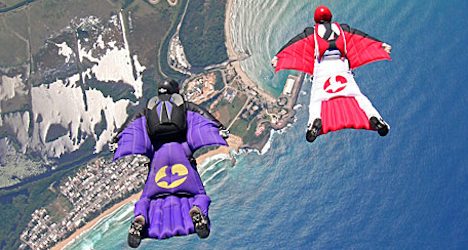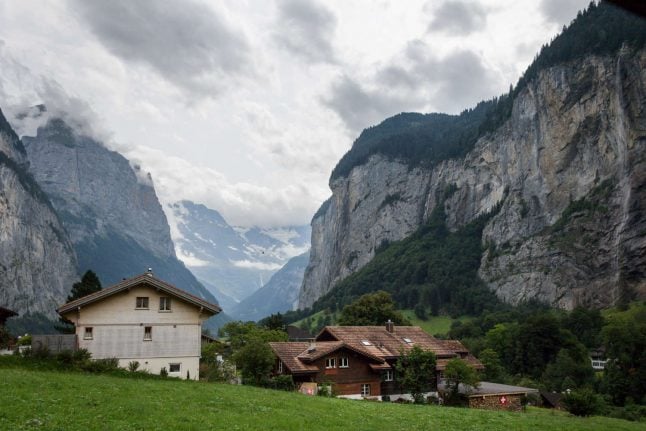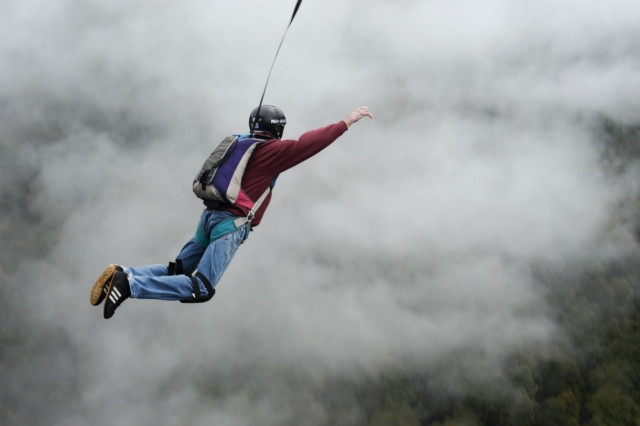Police in the canton of Valais confirmed earlier reports that 42-year-old Mark Sutton died when he crashed into a mountain ridge on Wednesday while wingsuit flying after jumping from a helicopter with a colleague.
"The investigation is under way, but it appears that the victim opted for a trajectory that was too close to the ground," Valais police spokesman Jean-Marie Bornet told AFP.
"With an impact of between 200 and 250 kilometres (125-150 miles) per hour, he died instantly," he added.
The incident occurred in rugged mountain terrain in the Valais Alps close to the French border.
"He was a real name on our scene, who really thought things through, and one of the best in the field," said French wingsuit flyer Roch Malnuit, who was part of the same group as Sutton but did not witness the accident.
"He was anything but a hot-head," Malnuit told AFP.
Wingsuit flyers wear special jumpsuits that add surface area to the human body, enabling them to glide like a bird, before opening a parachute to land like a regular skydiver.
The sport, also known as wing-diving, was developed in the 1990s, with its founding father considered to be Frenchman Patrick de Gayardon — killed in a parachute accident in 1998 at the age of 38.
Wingsuit flying has gained a cult following in recent years, thanks to breathtaking videos posted on the internet.
Sutton was part of a group of some two dozen highly-experienced practitioners who gathered in the Alpine sports hub of Chamonix in neighbouring France.
They were invited by French extreme sports channel Epic TV, which was filming their jumps in France and Switzerland.
"It's a breathtaking sport, for sure, but we're not crazy," said Malnuit.
"We have GPS's and lasers that measure the distance at which we have to open our parachute,"
Wingsuit flying is a form of base-jumping with practitioners jumping from aircraft, as well as fixed launch points such as bridges, tall buildings, or mountainsides.
Sutton jumped from a helicopter at an altitude of some 3,300 metres along with a man identified by British media as Tony Uragallo, who owns a company that makes wingsuits.
Uragallo launched himself from the helicopter first, closely followed by Sutton.
Both men were reportedly carrying cameras to film their flights, which should have taken about a minute to complete.
The jump took place over Trient, a small mountain community just inside Switzerland and around 25 kilometres northeast of Chamonix.
They had flown close to the mountainside, and planned to land near the hamlet of Le Peuty on the outskirts of Trient.
While Sutton's death is the first of a wing-diver in Valais, police said, the sport has claimed lives or led to serious accidents elsewhere, notably near the resort of Chamonix, which is a magnet for local and foreign practitioners, and in the Bernese Oberland.
A 24-year-old German wing-diver died last month close to the French town when he hit a rocky outcrop.
In July 2012, local authorities in Chamonix banned the sport temporarily in the wake of another accident which killed a Norwegian, and one which left a South African severely injured.
The ban was lifted last month with new rules in force this year banning wing-divers in Chamonix from flying between 10am and 3pm in order to avoid crashes with the paragliders who also flock to the Alps.
They must also inform the police in advance of their planned jumps.
The rules are less restrictive in Switzerland.
"There are no specific regulations," Valais police's Bornet said.
"You need a parachute licence, and you mustn't go into zones where there are flight restrictions, for example near an airport," he said.
A YouTube video taken by Sutton provides an idea of the wingsuit flying experience:




 Please whitelist us to continue reading.
Please whitelist us to continue reading.
Member comments